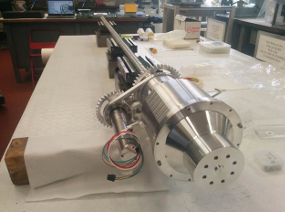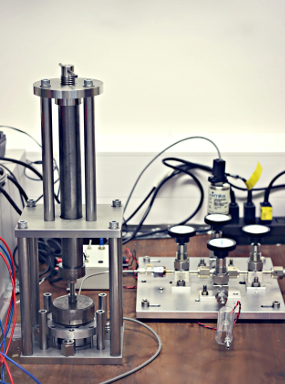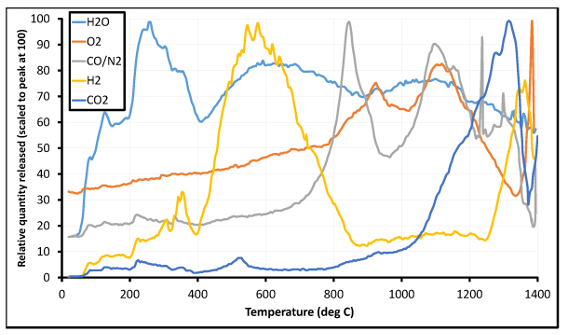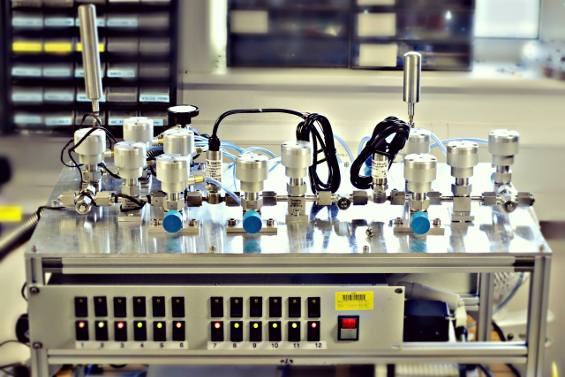System functions
Drilling and sampling
PROSPECT includes the ProSEED drill to access the subsurface to depths of at least 1 m. Once at the required depth a sampling tool removes samples, whilst preserving the sample temperature.
The drill is derived from that being developed for ExoMars and the SD2 drill flown on Rosetta's Philae lander. The PROSPECT drill has been modified to account for the mission requirements and the expected properties of the lunar surface in the polar regions.
 |
 |
| Above: Breadboard of the PROSPECT drill. Right: Development model for the oven sealing system. Credit: Leonardo, Italy. |
Sample heating and chemical extraction
Samples are sealed in ovens contained within the ProSPA laboratory. These ovens are derived from the heritage of those developed for ExoMars, Rosetta, and activities performed through the German LUISE programme. Samples can then be heated to temperatures as high as 1000 °C. Heating in vacuum extracts ices and solar wind implanted volatiles and releases some volatiles from minerals. Reacting gasses may also be introduced to the ovens by PROSPECT to extract additional chemistry of interest. A number of techniques are under investigation. These include combustion with oxygen, and reduction using hydrogen and methane.
Imaging
Images will be taken during drilling and sample transfer, illuminated by an external illuminator and at visible and near infrared wavelengths that have been selected to help identify the minerals present in the materials excavated by the drill. Images will also be used to confirm that the samples have been placed in the ovens and to allow an estimation of the sample mass to support analyses.
Gas compositional analysis
Evolved gasses can be analysed using an ion trap mass spectrometer within the ProSPA laboratory for masses up to around 200 AMU. This gives a qualitative measure of the composition of the sample. An illustrative volatile release curve from an Apollo soil is shown in the figure. Similar curves are expected to be produced by PROSPECT.
 |
| Illustrative volatile release curve from Apollo 16 Soil 69961,33. Data courtesy of E. Gibson |
Gas chemical processing
Target gasses are prepared for isotopic analysis through refinement or conversion to other chemicals in the ProSPA laboratory. Such conversion can prepare chemicals that are better suited than the original compounds to analysis using a mass spectrometer and can remove isobaric interferences, where different chemicals can become indistinguishable in the measurements.
 |
| Gas processing system manifolds development model. Credit: Open University, UK |
Gas isotopic analysis
Isotopes of the elements of interest are measured using a magnetic sector mass spectrometer within the ProSPA laboratory, along with measurements of reference standards. This technique provides a precise analysis of the sample, allowing comparison with laboratory measurements on Earth.




